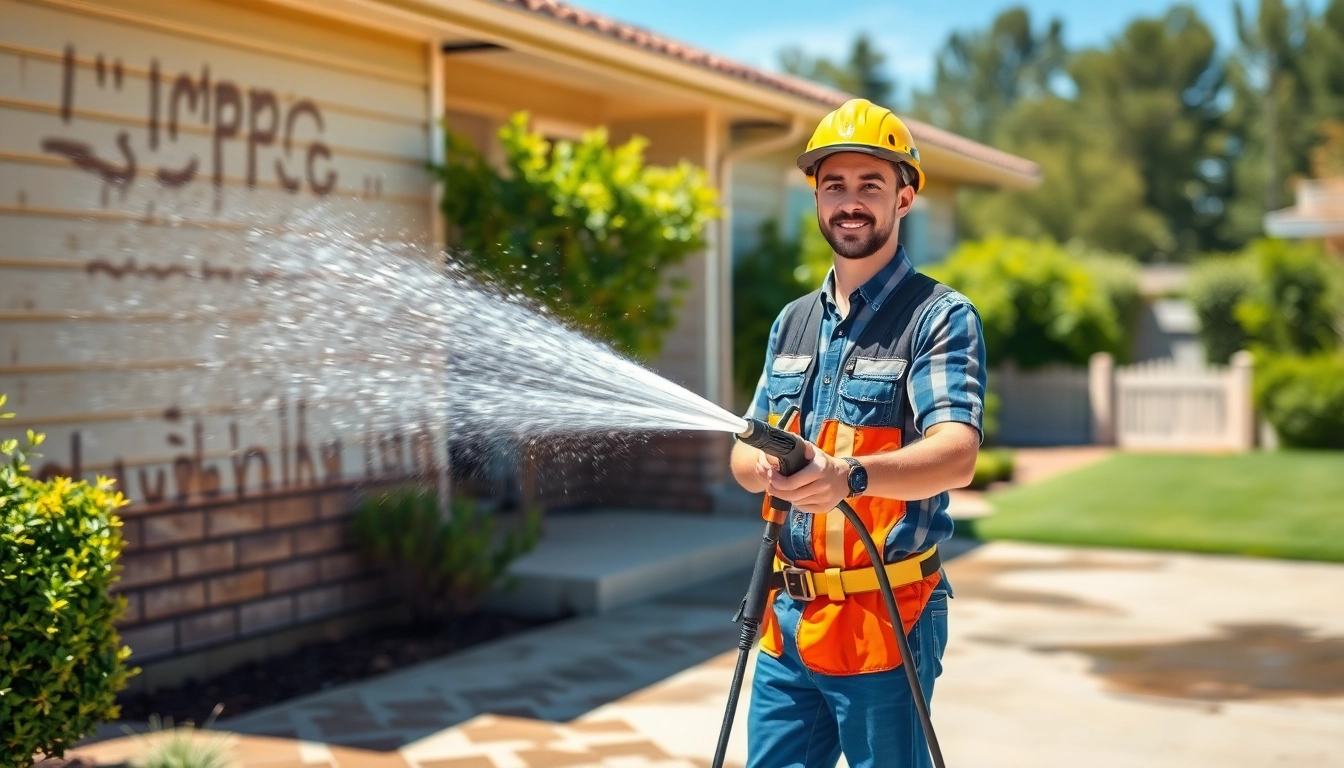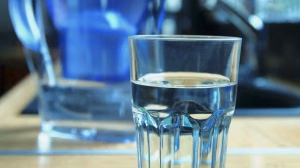Ultimate Guide to Pressure Washing in 2023: Transform Your Home’s Exterior

Understanding Pressure Washing
What is Pressure Washing?
Pressure washing, often referred to as power washing, is a robust cleaning method that utilizes high-pressure water streams to eliminate dirt, grime, mold, mildew, and other unwanted substances from various surfaces. This technique is widely favored for its efficiency and effectiveness in restoring the appearance of exteriors, be it residential, commercial, or industrial properties.
Essentially, pressure washing is the application of water at a high pressure, which allows it to penetrate crevices and clean surfaces that traditional cleaning methods might struggle with. Whether it’s for a driveway, siding, roofs, or patios, pressure washing serves as an invaluable tool in maintaining cleanliness and aesthetic appeal.
How Pressure Washing Works
At its core, pressure washing involves a machine equipped with a pump that increases the pressure of the water, shooting it out through a nozzle. This high-pressure water can range from 1,300 to 2,800 psi (pounds per square inch), making it powerful enough to dislodge stubborn stains and debris. Depending on the surface being cleaned, different nozzle tips can be used to adjust the spray pattern and intensity.
For instance, a wide-angle nozzle is perfect for washing large surfaces, while a narrow jet can focus on tough spots, such as grease stains. Many pressure washers also offer heated water options, enhancing cleaning effectiveness especially for oily or sticky substances.
Common Uses for Pressure Washing
Pressure washing finds its application in various settings. Here are some common uses:
- Residential Cleaning: Driveways, sidewalks, patios, and home exteriors can all benefit from pressure washing to restore their original appearance.
- Commercial Services: Businesses use pressure washing for cleaning sidewalks, storefronts, and parking lots, improving overall customer perceptions.
- Automotive: Pressure washing is effective for vehicle detailing, especially in undercarriage and engine cleaning.
- Industrial Use: Factories and warehouses often utilize pressure washing for equipment and surface maintenance.
- Roof and Gutter Cleaning: Removing moss, algae, and debris from roofs and gutters can prevent water damage and extend their lifespan.
Benefits of Pressure Washing
Cost-Effectiveness and Time Efficiency
One of the most compelling advantages of pressure washing is its cost-effectiveness. Investing in professional pressure washing services can save property owners significant amounts in maintenance and repair costs over time. Regularly maintaining surfaces through pressure washing can prevent the buildup of harmful substances that could lead to costly repairs or replacements.
Moreover, the time efficiency of pressure washing is unparalleled. What might take hours or even days with traditional cleaning methods can often be completed in a fraction of that time with a pressure washer.
Enhancing Curb Appeal
The visual appeal of a property is critical, particularly for those looking to sell. Pressure washing can dramatically enhance curb appeal by removing dirt, grime, and stains that accumulate over time. A clean exterior is often the first impression potential buyers have, and a well-maintained look can positively influence their perception.
Recent studies have shown that homes with regular maintenance, including pressure washing, can sell for significantly higher prices compared to those that have not undergone such upkeep.
Preventive Maintenance for Your Property
Regular pressure washing serves as a preventive maintenance tool that can help avert more serious damages down the line. For instance, eliminating mold and mildew not only improves appearance but also prevents these substances from deteriorating the underlying materials.
By keeping surfaces clean, property owners reduce the risk of rot, decay, or erosion, thus extending the life of various components of their property.
Choosing the Right Equipment for Pressure Washing
Types of Pressure Washers
When it comes to pressure washers, there are three primary types: electric, gas, and diesel-powered models.
- Electric Pressure Washers: Ideal for light-duty tasks, these models are quieter, more affordable, and suitable for smaller areas such as patios, decks, and outdoor furniture.
- Gas Pressure Washers: Providing more power, gas models are suited for medium to heavy-duty tasks. They can tackle larger surfaces like driveways and garages and can be used for longer durations without overheating.
- Diesel Pressure Washers: Best for industrial settings, these machines offer high efficiency and durability for extensive cleaning tasks. They are often used by professional cleaning companies.
Essential Accessories & Supplies
To maximize the effectiveness of pressure washing, having the right accessories is crucial:
- Nozzles: Different nozzles help control the pressure and water output for various tasks.
- Extension Wands: Allows for cleaning hard-to-reach areas, like high walls or gutters.
- Surface Cleaners: Useful for cleaning large flat areas quickly and evenly, such as patios and driveways.
- Water Detergents: Chemicals designed to enhance cleaning power, especially against tough stains.
Safety Gear for Pressure Washing
Safety is paramount when engaging in pressure washing. Essential safety gear includes:
- Protective Eyewear: To shield your eyes from debris and water.
- Gloves: Protect your hands from sharp objects and chemicals.
- Non-slip Footwear: To prevent slips and falls on wet surfaces.
- Long Sleeves and Pants: Guard against injuries from the high-pressure spray.
DIY vs. Professional Pressure Washing Services
When to Hire a Professional
While DIY pressure washing can be feasible for minor jobs, there are instances where hiring a professional service is not only beneficial but necessary. For large properties or heavily soiled surfaces, professionals can ensure that the task is completed safely and effectively. Additionally, if you lack experience with handling pressure-washing equipment, hiring a professional can be a safer alternative.
Common Mistakes in DIY Pressure Washing
Many DIY enthusiasts can fall victim to common pitfalls, including:
- Incorrect Nozzle Usage: Using the wrong nozzle can damage surfaces.
- Not Maintaining Proper Distance: Standing too close to the surface can lead to damage.
- Ignoring Safety Protocols: Failing to wear protective gear can lead to injuries.
- Not Pre-Treating Surfaces: Skipping pre-treatment for tough stains can reduce cleaning effectiveness.
Evaluating Local Pressure Washing Services
When facing the decision to hire a professional service, consider several factors:
- Experience and Expertise: Look for companies with a solid reputation and positive reviews from clients.
- Insurance and Licensing: Ensure that the pressure-washing service is licensed and insured to protect against liabilities.
- Equipment Quality: Inquire about the type of equipment they use to ensure it is up-to-date and effective.
- Quotes and Pricing: Always ask for a detailed estimate before hiring.
Best Practices for Effective Pressure Washing
Preparing Your Property
Preparation is essential for effective pressure washing. Here are the key steps:
- Move all furniture and decorative items from the area to be cleaned.
- Cover plants and electrical outlets to prevent damage.
- Identify and patch any cracks or areas that might be sensitive to pressure washing.
- Ensure that you have all necessary equipment and safety gear on hand.
Step-by-Step Pressure Washing Techniques
When pressure washing, follow these steps to achieve optimal results:
- Start with Lower Pressure: Begin with a lower pressure setting to assess how surfaces react.
- Work from Top to Bottom: Always wash from the top down to ensure that dirt and water flow downwards.
- Use Overlapping Strokes: Overlap your strokes to avoid streaks and ensure even cleaning.
- Rinse Thoroughly: Always rinse the area thoroughly after washing to remove any remaining soap or dirt.
Post-Cleaning Maintenance Tips
After completing the pressure washing process, consider implementing these maintenance tips:
- Inspect surfaces for any damage that may have gone unnoticed prior to cleaning.
- Consider applying sealants or protective coatings to prolong cleanliness.
- Schedule regular cleanings depending on your property’s exposure and debris accumulation.






